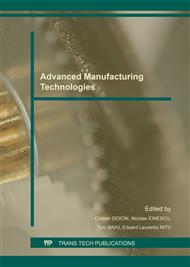p.187
p.193
p.199
p.205
p.211
p.217
p.225
p.231
p.237
Improving the Organizational Performance in Automotive Manufacturing by Using Fast Response on Layers at Quality Issues
Abstract:
The organizational performance depends of the development of the processes in the organization. In the automotive manufacturing – based on the requirements from the referential standards like ISO 9001 or ISO TS 16949 – the processes map describe very clear all the processes and their inter-correlation. To achieve the level of performance according with top management expectation all processes are monitored regarding the effectiveness and efficiency using the key indicators, but the level of performance is also direct linked with the level of response at quality issues. But the organizations have the processes with different structure of personnel who take care for managing the processes, with different levels of reporting and leadership. This paper presents the advantages to develop the FLRQI (Fast Response on Layers at Quality Issues) easy to communicate and escalate from down to top, and to develop and coach the personnel from top to down in the same time, at the end the advantages to have the fast response at issues implemented in all departments will be measured in better quality, less cost and on time delivery. The paper proposes a new concept to implement a culture of fast response which is easy to be applied in multi-national companies because is easier to be tailored on each structure of the processes.
Info:
Periodical:
Pages:
211-216
Citation:
Online since:
April 2016
Authors:
Keywords:
Price:
Сopyright:
© 2016 Trans Tech Publications Ltd. All Rights Reserved
Share:
Citation:


